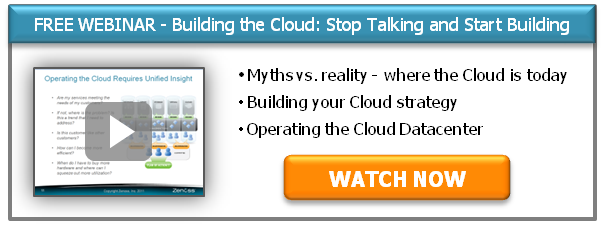
Given the sky-high expectations of Cloud computing, it’s troubling to observe past mistakes being repeated. Oh the technologies are very intriguing from OpenStack, OpenFlow, Cloud.com, Puppet Labs, KVM, ESXi, Storage, FCoE, and more but remember the best technology doesn’t always win. If it’s all about the Services and Applications, then how do you guarantee Service Levels and Performance? How do you mitigate risks? How do you proactively notify customers of issues? How do you reduce MTTR or turn outages into simple incidents?
The answer to these questions is Cloud instrumentation or management, or monitoring. Once again this critical component to Cloud infrastructure has become an afterthought. Some believe classic-polling techniques such as SNMP will get the job done. Others are putting their faith in legacy solutions that have been cleverly re-branded as Cloud Management products. Isn’t it wonderful how legacy software never dies it simply reinvents itself into maintenance heaven?
The reality is Cloud computing breaks the legacy monitoring paradigms of the past as these systems were built for static environments. Now that nearly everything is virtualized, operations requires a real-time view of the infrastructure while understanding the Services they are providing. Simply waiting for an event or a screen to turn red or beep at you is not enough and often times are too late.
In the end, Cloud Instrumentation becomes the glue that interacts with the applications, compute, storage, networking, orchestration, trouble ticketing systems, and more. It is a foundational piece of the “Cloud Stack” and one that must not and cannot be ignored. Cloud providers may want to revisit their implementations as providing their customer’s visibility into all layers of the stack would be a competitive advantage not a liability.
Whether you are building a private, public, or hybrid Cloud infrastructure, let’s not repeat the mistakes of the past and make Cloud instrumentation a top priority!
Image Credit: Elsie esq.








